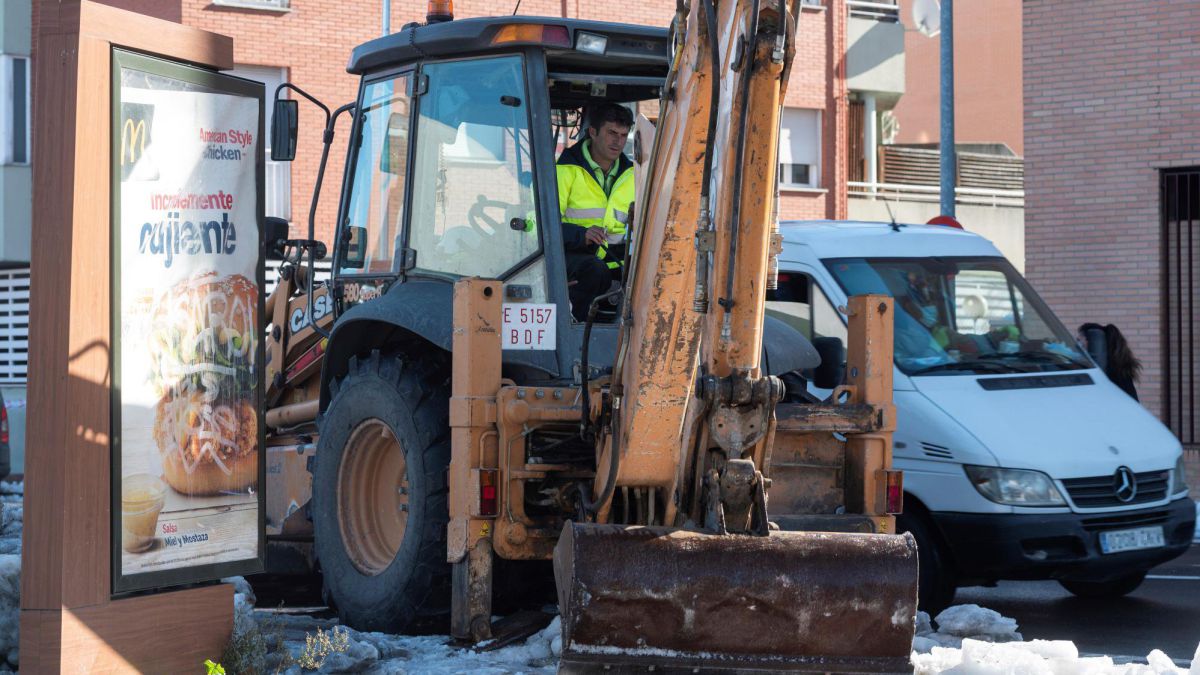More from Author Melissa Galbraith here: https://globelivemedia.com/author/melissa-galbraith/
After the damage caused by the temporary ‘Filomena’ in the Madrid’s community, the region’s City Council has prepared a plan to prevent the torrential rains expected from Wednesday do not involve inconveniences on public roads such as the road and city blockades due to flooding.
To avoid new disasters in the Community, Madrid has developed a map of the 404 most critical points of the municipal sanitation and sewerage network so that they are cleared of ice and debris during rainy days which, according to the weather forecast, will last a week.
▶️@Madrid launches an action plan against the rains🌧️ and the thaw🧊.
Includes actions of:
➡️Prevention.
➡️ Cleaning of public roads.
➡️ Public information.Get informed👇👇 pic.twitter.com/Xpip5uxXud
– Madrid City Council (@MADRID) January 18, 2021
A device with 320 people and 20 machines
From the City Council they explain the action plan: “The preventive device is made up of 320 people and 20 machines. For the execution of the works, crews of between four and five people will be used and the help of machinery for those more conflictive scuppers ”. From Wednesday there will be operators and drain machines from the Urgent Cleaning Service (SELUR) in the more sensitive places so that, in case of water rafts, they intervene quickly.
“The 404 points have been determined after analyzing the water accumulation notices of the last two years. Specifically, where there is most is in the districts of Chamartín and Moncloa”, has explained to Efe Television andl Councilor for the Environment and Mobility, Borja Carabante.
As detailed by the City Council in a statement: “The districts with the streets whose drains have had more problems in the event of flooding have been Chamartín (38 streets), Moncloa (36), Latina (27), Fuencarral (26), Tetuán (25), Arganzuela (23), Centro (21), Chamberí (20), Hortaleza (20), Puente de Vallecas ( 20), Carabanchel (16), Barajas (14), San Blas (13), Villaverde (13), Usera (12), Ciudad Lineal (11), Vicálvaro (10), Villa de Vallecas (10), Retiro (7 ) and Moratalaz (4).
Cleaning in 29 tunnels
29 tunnels of the capital, with 600 openings through which the rainwater is emptied, also They are being reviewed since Monday, January 19 to check the drainage systems, as well as the cleanliness of the water collection elements: “Through this plan the drainage systems are being cleaned to facilitate the absorption and evacuation of water that may be accessed through the ramps of the tunnels, avoiding impoundments in the low points inside them “, detail the Madrid City Council.
“Likewise, the checking the operation of pumping systems for verify that they can evacuate the flows derived from the thaw and the expected rains “, Add.
We put in place an urgent cleaning plan for scuppers and sewers in anticipation of rain 🌧️ and thaw ❄️.
✅ 320 workers 🚛 will act in the drains of 404 areas detected as problematic for the formation of reservoirs.#Filomena #FilomenaMadrid pic.twitter.com/C8yDszDO4Z– Madrid City Council (@MADRID) January 19, 2021
“The deployment for manual cleaning of scuppers in tunnels is 48 people. To this must be added the accompaniment of other teams that will provide coverage and complement the actions carried out. On the part of the urban facilities service, there will be three teams of first intervention personnel and unblocking machinery to act immediately if necessary. In addition, the road infrastructure service will keep two other support teams on alert for immediate actions. In any case, these means are likely to be increased if necessary ”, they point out from the Consistory.
Up to 20 liters per square meter could accumulate
From the State Meteorological Agency (AEMET) they have calculated that about 40 liters per square meter could accumulate in the Sierra de Madrid and between 10 and 20 in the metropolitan area of the capital.

